Introduction
What is the impact on a community’s heritage and identity when the physical spaces it once lived in have changed beyond recognition? Are social memories sufficient in describing social interactions and cultural practices that occurred in vastly different contexts? Are 2D map presentations of long-gone physical landmarks adequate in conveying interactions and stories that imbued deep meaning and attachment to those landmarks?
As researchers who actively research, document and present the social memories and cultural practices of various communities of Singapore, we value the collaboration with community participants in our projects as well as the complexities and nuances in community engagement.1 Through the course of our work, we are always mindful of responsible community engagement and the value of active community participation in documenting and presenting heritage and identity for public consumption.
Our research experiences formed the basis of a one-day workshop for SUSS students, staff and faculty in September 2022. The workshop included guided visits to two community-based heritage galleries – Peck San Theng Heritage Gallery and Geylang Serai Heritage Gallery, and a dialogue with residents from the old Kampong San Theng and Kampong Geylang Serai. The workshop ended with a short activity and presentation done by SUSS students in response to what they experienced and observed from the gallery visits and dialogue.
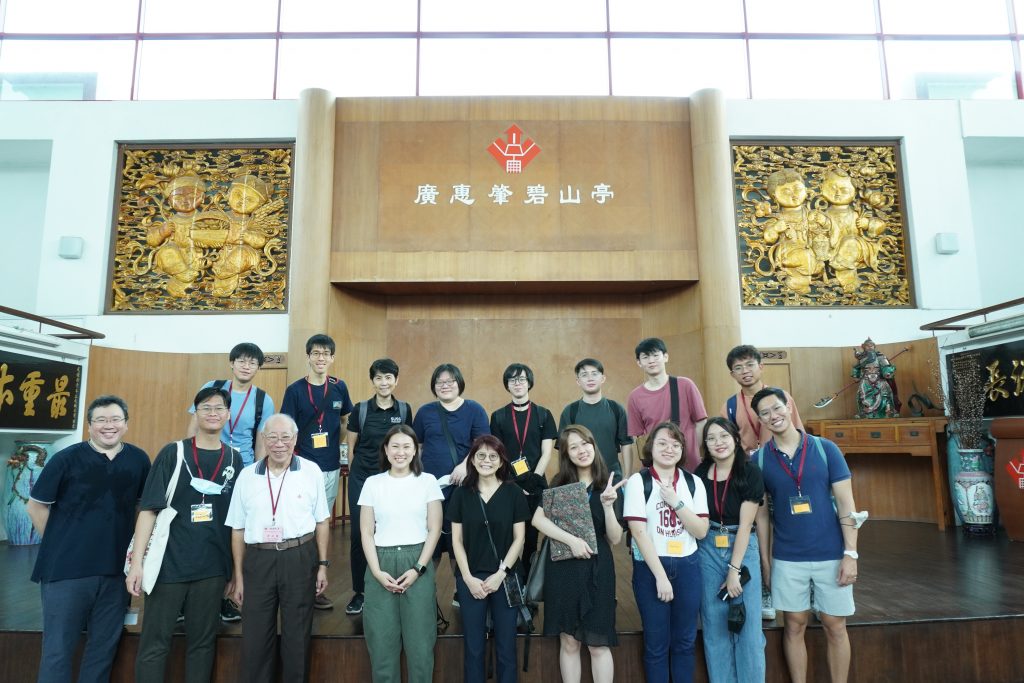
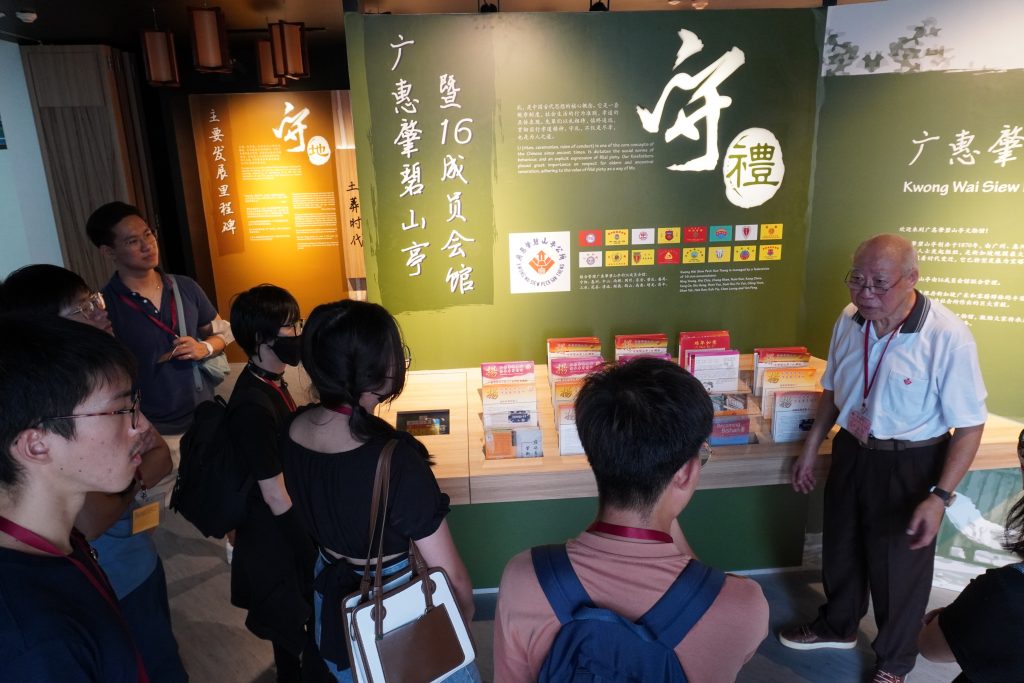
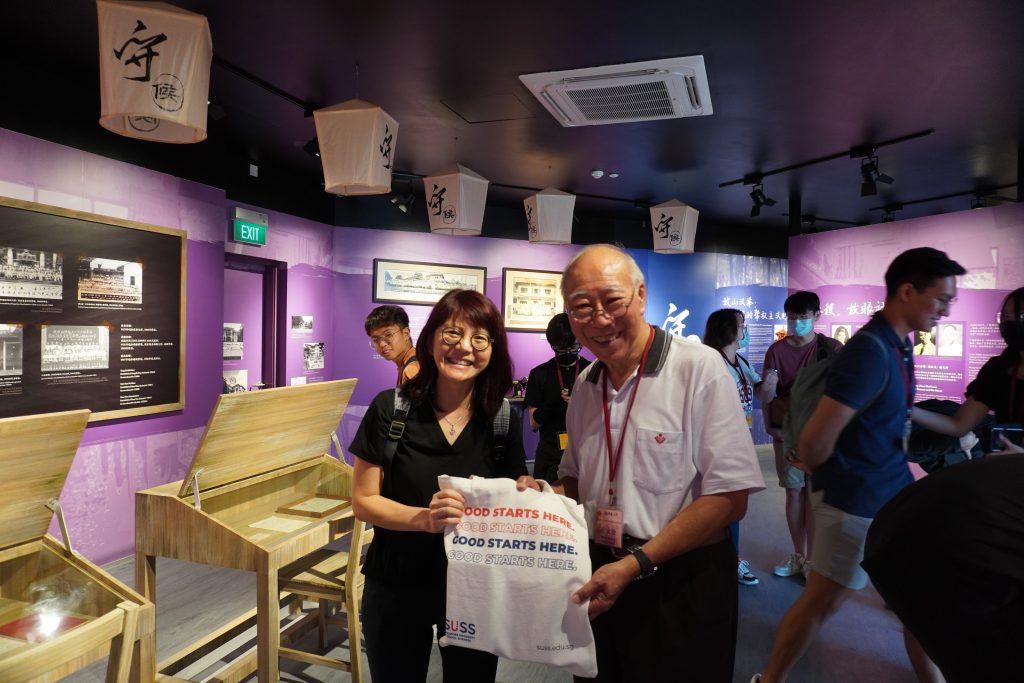
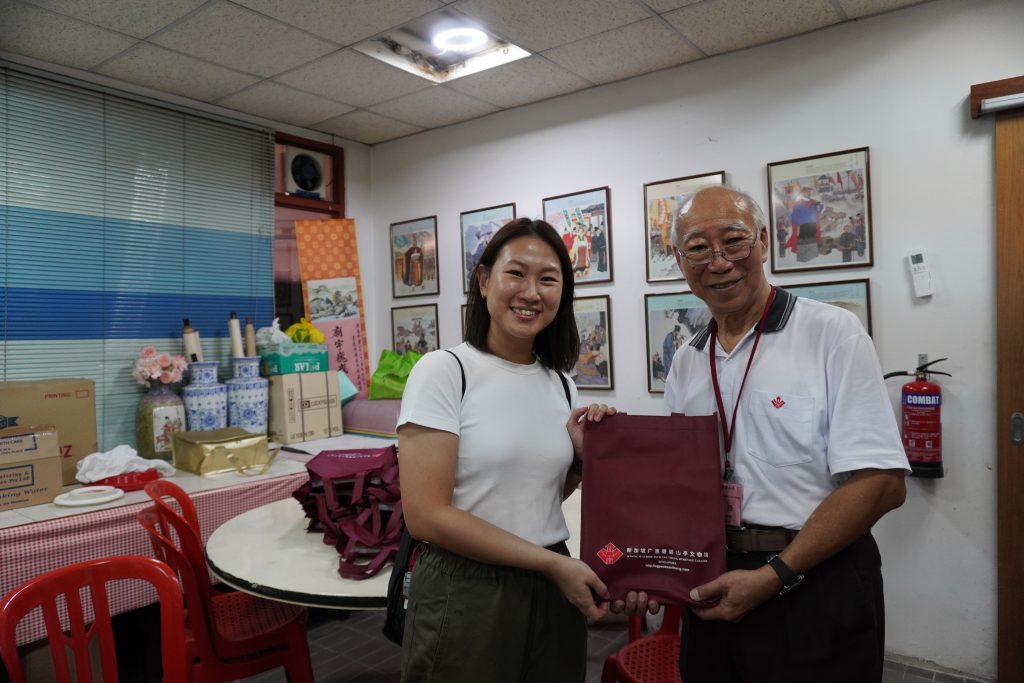
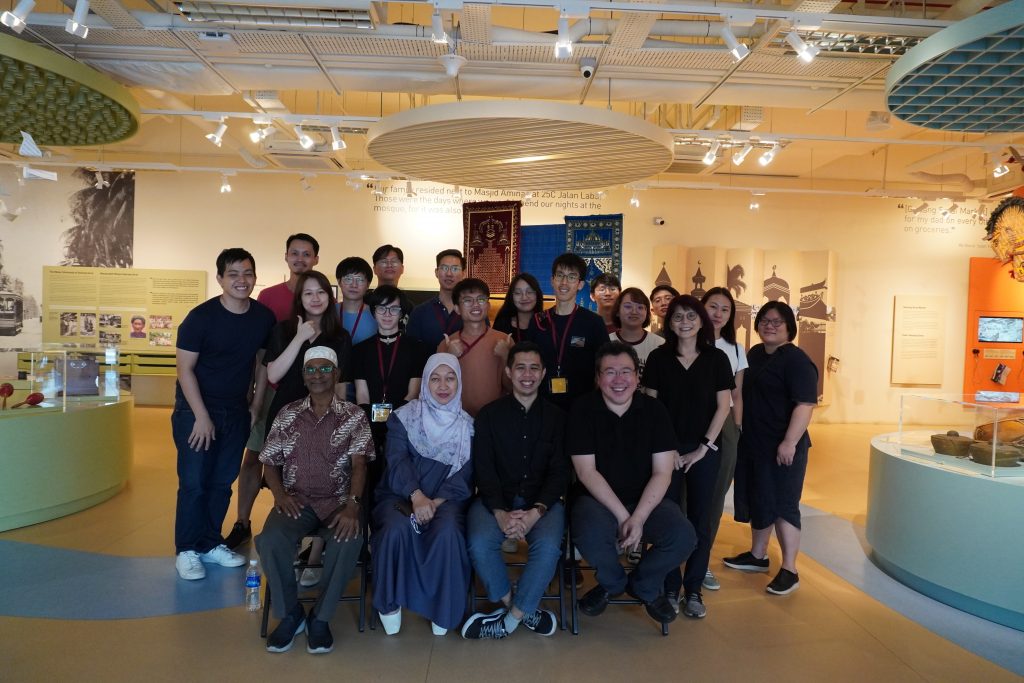
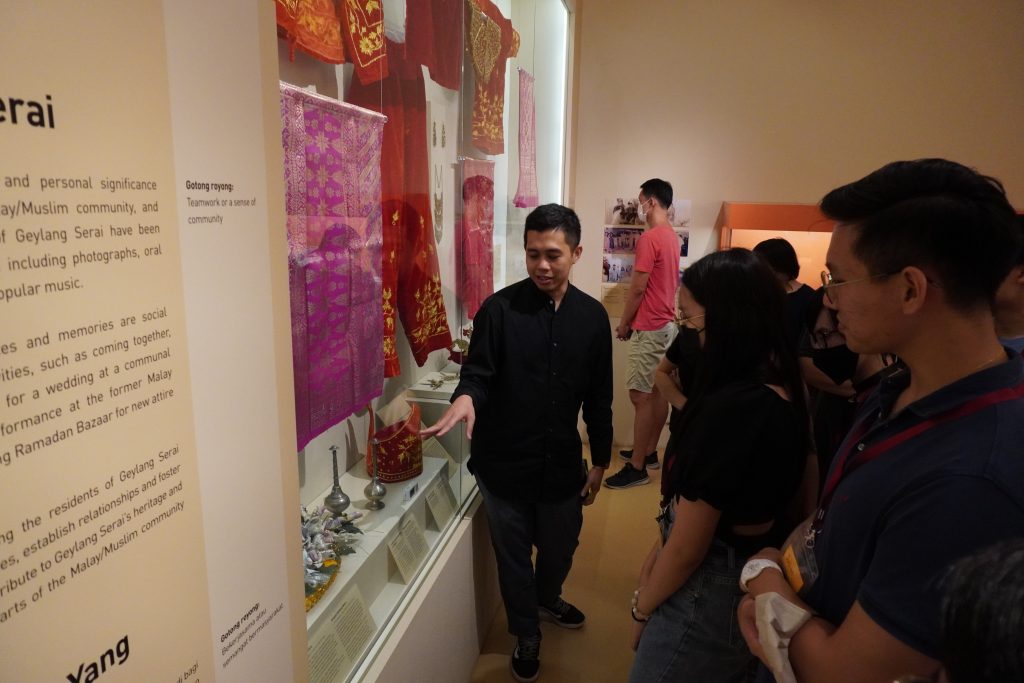
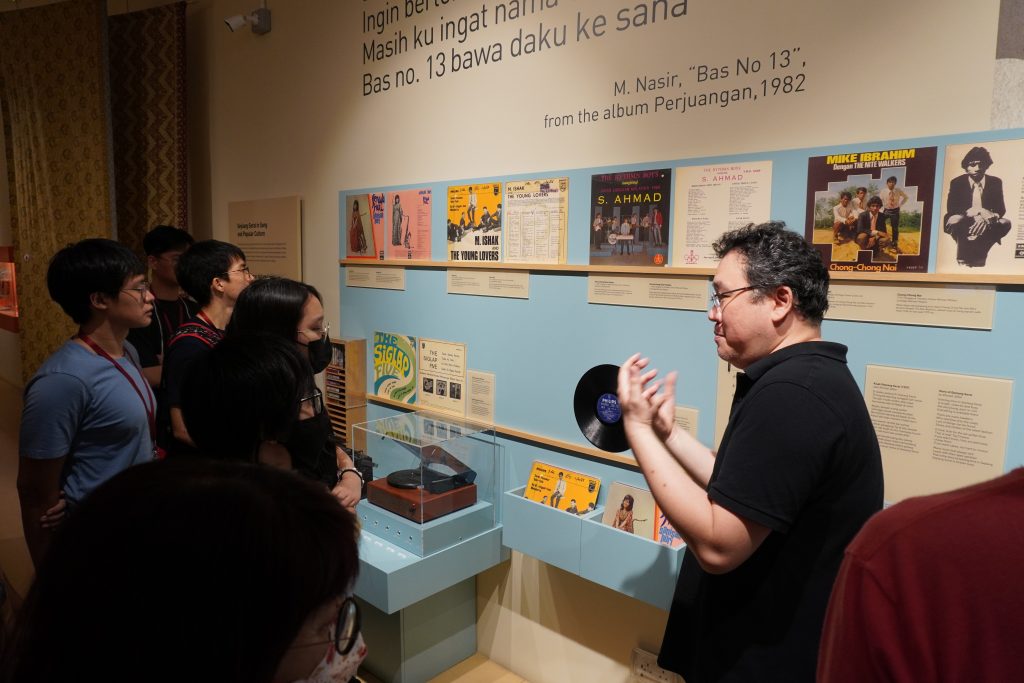
The workshop represents a key area of focus of SUSS’ Core Learning curriculum. This curriculum aims to provide SUSS students, via a suite core courses, a foundation of essential values, knowledge and skills that they can not only use and apply to better the communities they are a part of, but to also better understand their own impact and role within such communities.2
Kampong San Theng and Kampong Geylang Serai: Then and Now
At first glance, the two places may appear to share little in common. Located in the east, Kampong Geylang Serai was one of the earliest and largest settlements outside of Singapore’s city limits, home to multiple communities but with an overall Malay/Muslim flavour in terms of population and identity.3 Located in the central-northern part of Singapore, Kampong San Theng was a thriving community situated next to Peck San Theng, once the largest Cantonese and Hakka cemetery in Singapore until the 1980s when it was converted into a columbarium that caters to all faiths and communities.4
However, it becomes clear why these two places can be studied together once we compare maps of the two areas. We see that both have underwent (and continue to undergo) extensive urban redevelopment for various reasons, such as resettlement into houses with modern amenities (such as running water, electricity and waste disposal systems), land acquisition for residential and commercial purposes etc. Such developments fundamentally changed the physical landscape of the areas where Kampong San Theng and Kampong Geylang Serai were once located, and in doing so, affected their culture, identity and heritage (and how those are represented thereafter).
As seen in the map below, one entrance to Kampong San Theng was located next to Macritchie Reservoir, bordered by Thomson Road to the east, Braddell Road to the south, an extended Jalan Pemimpin to the north, and a road called Kampong San Theng that ran through the middle of the community. Kampong San Theng was a residential community that also included temples, schools, various commercial enterprises supporting the cemetery (including a prominent teahouse that also served as a community gathering area for residents).
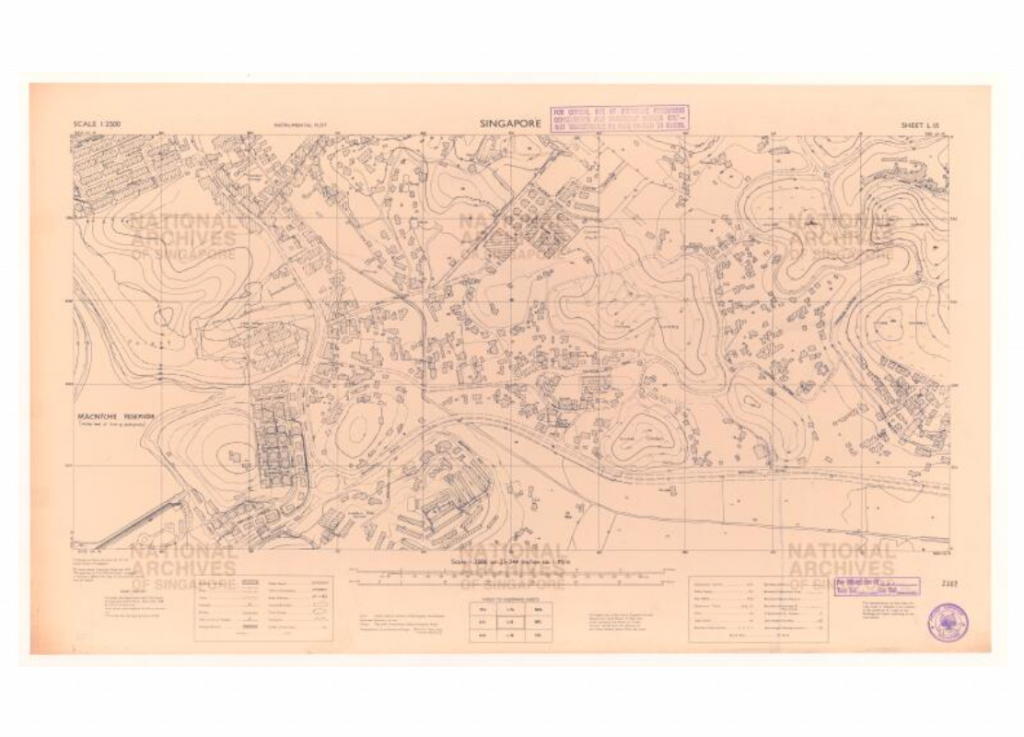
Compare the above to a screenshot from Google Maps of the same area today. While Thomson Road remains, a new Marymount Road appears cutting across the western entrance to Kampong San Theng. The road Kampong San Theng no longer exists – replaced perhaps by Bishan Street 21, while a minor road took over the name Jalan Pemimpin (a major thoroughfare in 1970). On the grounds of the former kampong and the cemetery lie schools, industries, public and private housing – all supported by a network of roads and infrastructure that bear little to no connection to Kampong San Theng. The only reminder of the former kampong and the cemetery that once existed is the columbarium Kwong Wai Siew Peck San Theng and its on-site heritage gallery.
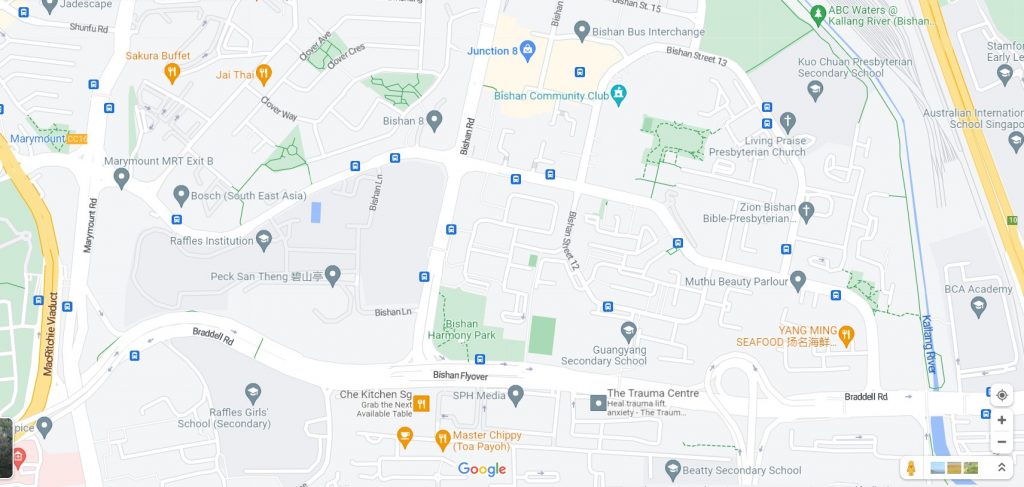
Similarly, Geylang Serai was once home to over 100,000 residents living in a densely-populated area bordered by Paya Lebar Road to the west, Geylang Road and Upper Changi Road to the south, Jalan Eunos to the east – with its commercial centre at the crossroads of four major roads: Geylang Road, Upper Changi Road, Joo Chiat Road and Geylang Serai. A closer inspection of the 1970 map not only reveals long expunged thoroughfares that supported the community, such as Lorong Engku Aman, Jalan Alsagoff, Jalan Pasir and Jalan Tengah, but also small streams and tributaries connected to Geylang River.
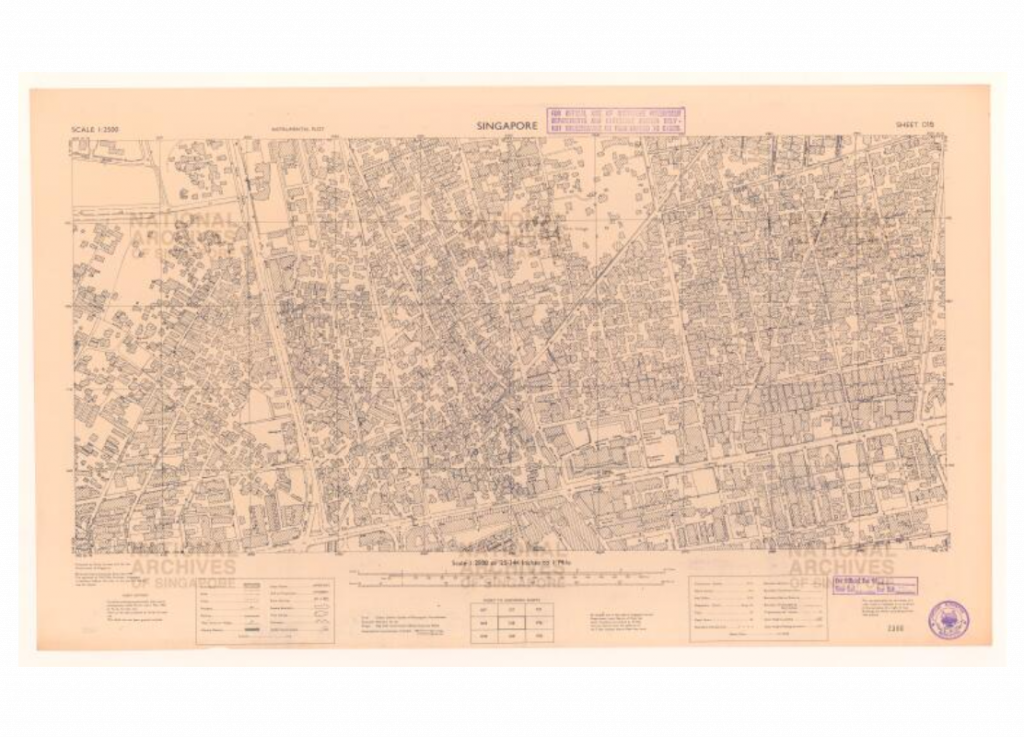
As can be seen in the below image, the physical landscape of Geylang Serai, like Kampong San Theng, has been fundamentally altered. Gone are the buildings that once represented thousands of homes and commercial / business activities and the roads with distinctive names. They are all replaced by a sprawling industrial estate (divided by a major highway, the Pan-Island Expressway), an emerging commercial complex centred around Paya Lebar MRT (Mass Rapid Transit) train stations, and road names that (again) bear no witness or indication to what was once there. The only thing that perhaps remained somewhat intact is the intersection of the four roads (and the neighbouring market, food and social gathering places), which continues to be perceived as the heart of Geylang Serai.
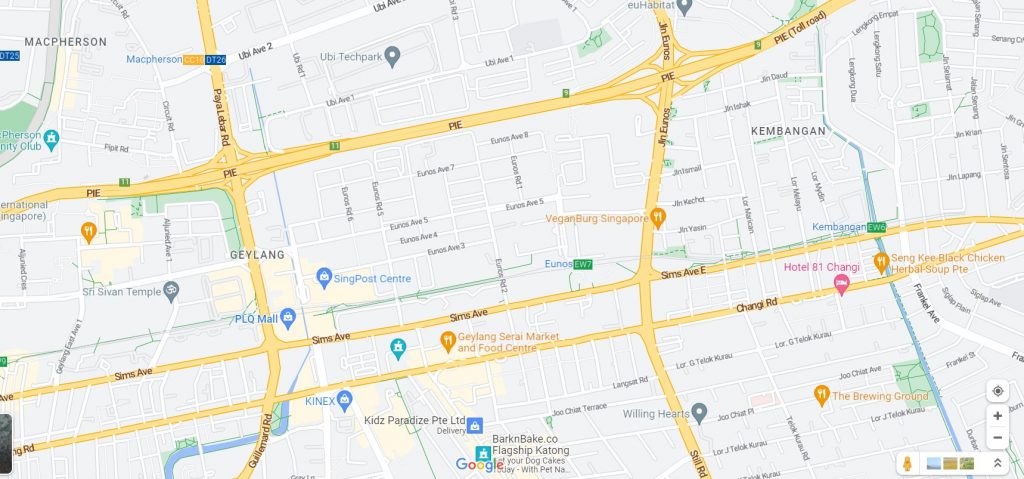
Today, what is left to gesture to the once thriving communities are heritage galleries commissioned to remember and represent aspects of the places’ histories and some of the social and cultural practices. What remained of the once sprawling 324-arce Peck San Theng cemetery is 8 acres of land on which the columbarium with an on-site heritage gallery is presently situated; the kampong’s identity and heritage irrevocably enmeshed with that of the larger Marymount-Bishan area.
Despite residing elsewhere, former Geylang Serai residents still return and gather at the sites of the former homes and/or hangouts, even if they are now shopping malls or the tarmac of carparks, especially during festive periods such as Ramadan and Hari Raya Puasa. Over time, Geylang Serai has been presented as the “cultural and heritage symbol of the Malay community”,5 buttressed by initiatives such as the old Malay Village (once located where Wisma Geylang Serai and the Geylang Serai Heritage Gallery are currently situated) as well as events such as the annual Ramadan bazaar.
The Students’ Task
The drastic transformation of Kampong San Theng and Geylang Serai presents challenges to researching and representing the histories of the locales and of its communities. The absence of physical landmarks, the passing of former residents – for whom these places hold so much significance, are major obstacles in accessing the place-histories and the communities’ experiences. This makes it even more urgent, not only to document the stories, experiences, social practices, cultural rites, and general sights and sounds as much as we can, but also in the first place, to invoke awareness of such situations (that is change in general and dealing with such changes) and to sustain that awareness and interest beyond the initial stages.
Sometimes, the experiences of communities are presented as “stories” of the “good old days”, or as lessons for the present and future. At best, this approach may run the risk of misrepresenting or taking out of context the stories and experiences of the community, and at worst, impede meaningful community engagement as those sharing their stories and experiences may feel that they are not presented as they remember it.
Hence, active and responsible community engagement should not aim at merely extracting and documenting stories and experiences. It must also empower the community, first in raising awareness of its own agency during periods of collaboration, and second, to equip students, teachers, facilitators and researchers with the knowledge and skills to not only engage and understand the community, but to also lay the foundations for greater ownership of continuous learning. Moreover, it is important as well to be aware of our own roles and impact within and on the community during the engagement process, especially as Singaporean university curricula attempt to find more relevance vis-a-vis the communities they serve.
These are some of the guiding principles underpinning our one-day workshop. The students’ task for this workshop required them to do more than just listen to stories from curators and ex-residents to learn about the history of Kampong Geylang Serai and Kampong San Theng. Through a series of questions and prompts designed by our Core Learning colleague, Dr Mia Lee, the students were invited to consider the extent of rapid urbanisation in Singapore, and their impacts on the different communities. At the end of the workshop, the students were given the opportunity to propose their pitches to update one of the heritage sites to better encourage community building and engagement. We are proud to share some of the students’ infographic that capture their thoughts and ideas and we hope this encourages more community participation among our staff and students.
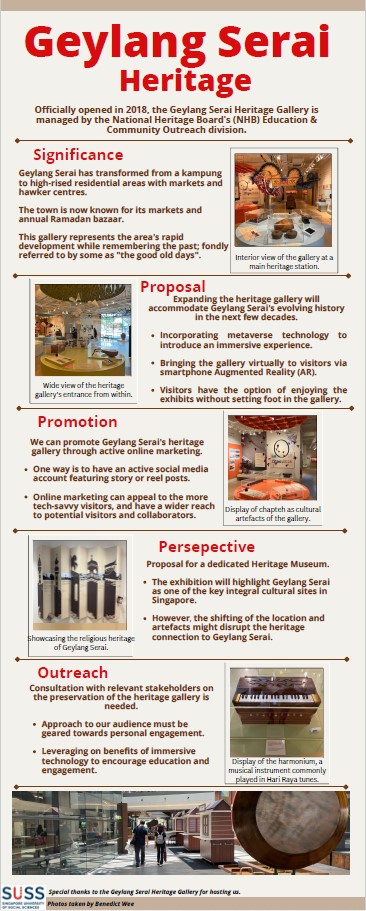
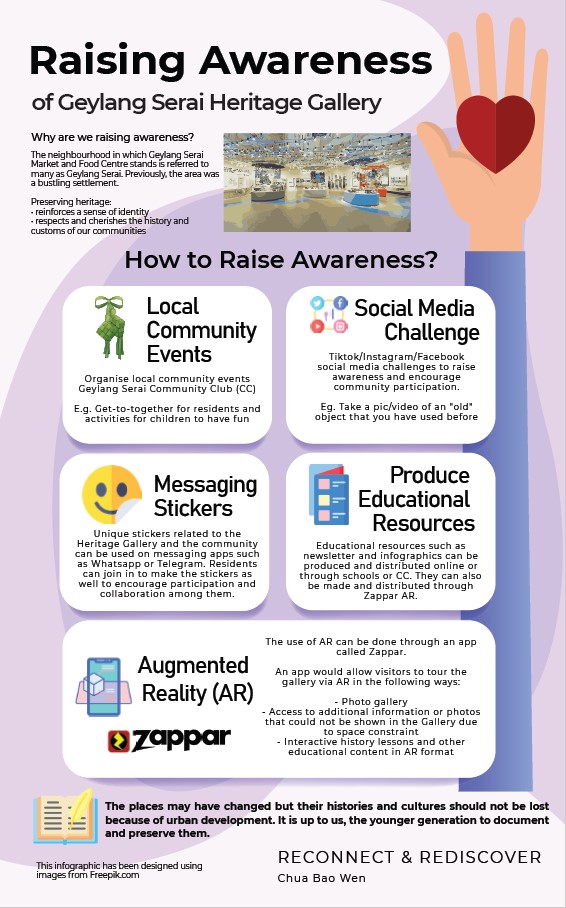
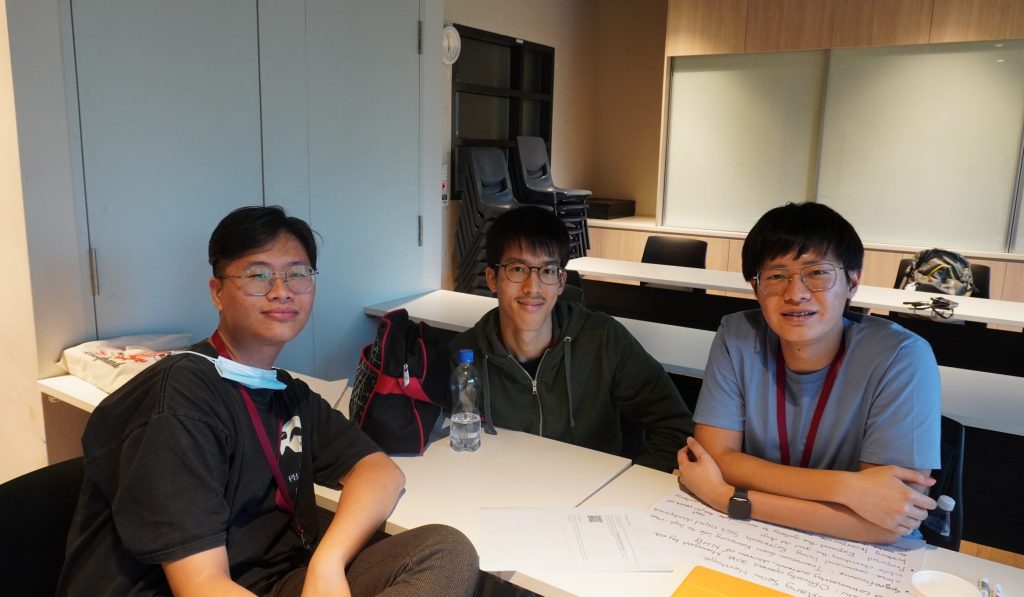
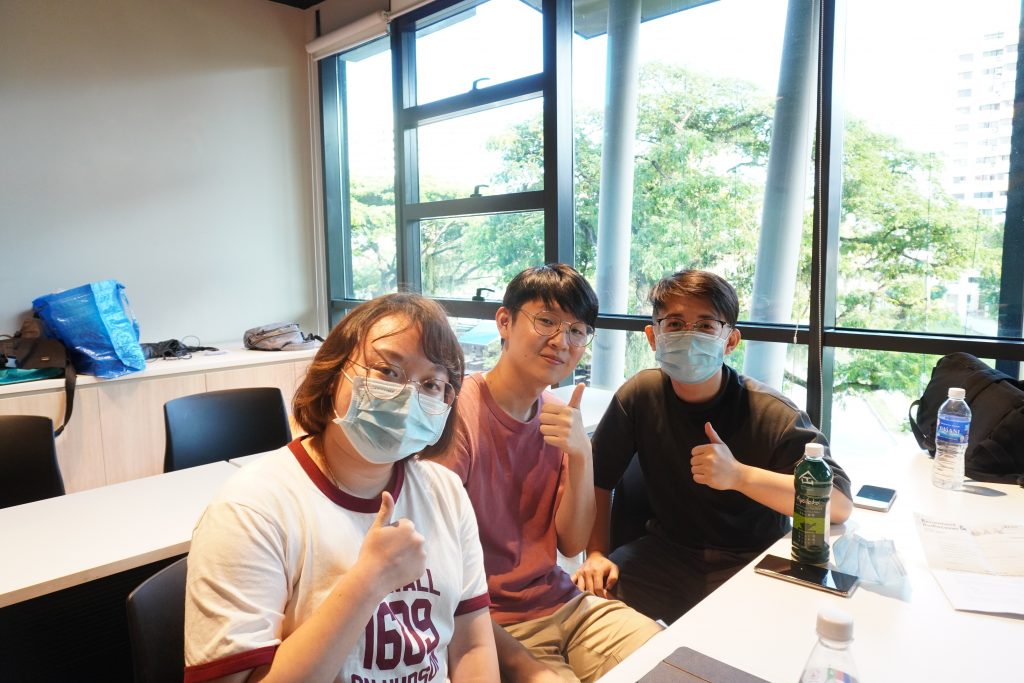

- Lye is the Principal Investigator (PI) of “Chinese Funeral Practises in Singapore”, a project supported by the National Heritage Board’s Heritage Research Grant (HRG). The project sought to map the social landscape of contemporary Chinese funeral rites, activities, artefacts and beliefs in Singapore. Aspects of the project are mounted on the following website: https://chinesefuneralpractices.sg/ and in a forthcoming edited volume “Death and the Afterlife: Multidisciplinary Perspectives from Asia”. As a curatorial researcher in the Malay Heritage Centre, Ho supported the research, conceptualisation and installation of the Geylang Serai Heritage Gallery, which was officially launched in January 2019 to showcase the history of one of Singapore’s earliest suburban areas as well as the heritage of the community that once called the place home. For more information on the gallery and Geylang Serai, see the digital representation of the gallery here: https://www.roots.gov.sg/en/stories-landing/stories/Geylang-Serai-Heritage-Gallery.
- Core Learning curriculum / webpage: https://www.suss.edu.sg/about-suss/college-of-interdisciplinary-experiential-learning/cl.
- See for a historical overview, Maisarah Abdul Malek and Ho Chi Tim, “Geylang Serai: Crossroads of History and Memory”, MUSE SG, Vol. 12, Issue 1, pp. 12-19: https://www.roots.gov.sg/resources-landing/publications/education-and-community-outreach/MUSE-SG-Volume-12-Issue-01
- More information about Kampong San Theng, its residents and the cemetery can be found at the website Singapore Kwong Wai Siew Peck San Theng: https://sgpecksantheng.com/. Kwong Wai Siew is an association of over a dozen Cantonese and Hakka clan associations that has been active in Singapore for over 100 years.
- More information about Kampong San Theng, its residents and the cemetery can be found at the website Singapore Kwong Wai Siew Peck San Theng: https://sgpecksantheng.com/. Kwong Wai Siew is an association of over a dozen Cantonese and Hakka clan associations that has been active in Singapore for over 100 years.
